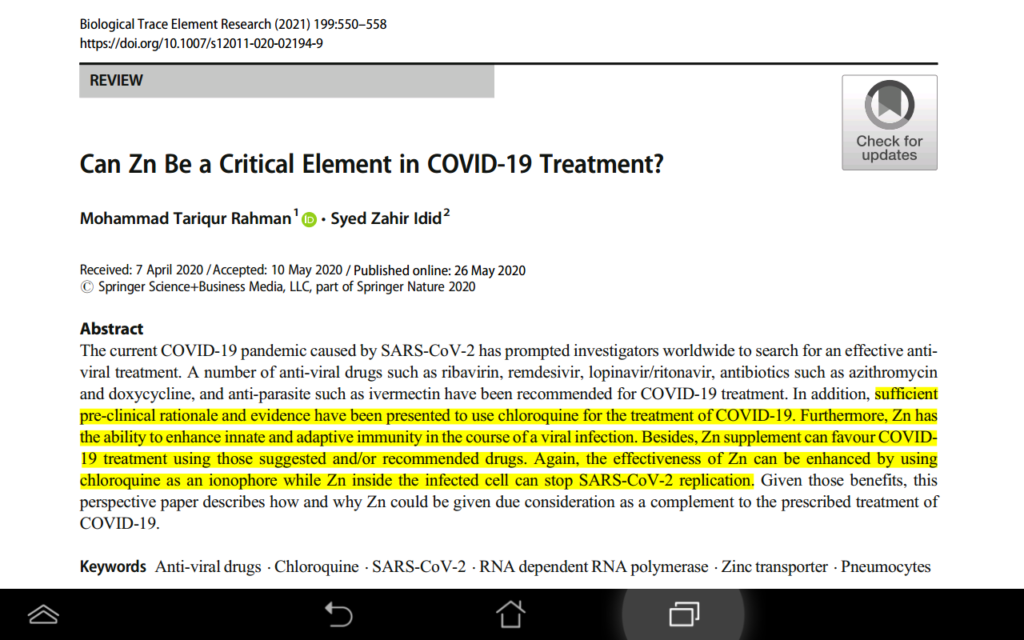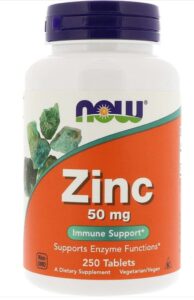
2005 medical study “Chloroquine is a potent inhibitor of SARS coronavirus infection and spread” proved Chloroquine / Hydroxychloroquine prevents SARS-CoV infection and spread. The 2005 study effectively showed World that the Apotex drug Hydroxychloroquine can do what COVID-19 vaccine can’t do.
We report, however, that chloroquine has strong antiviral effects on SARS-CoV infection of primate cells. These inhibitory effects are observed when the cells are treated with the drug either before or after exposure to the virus, suggesting both prophylactic and therapeutic advantage. In addition to the well-known functions of chloroquine such as elevations of endosomal pH, the drug appears to interfere with terminal glycosylation of the cellular receptor, angiotensin-converting enzyme 2. This may negatively influence the virus-receptor binding and abrogate the infection, with further ramifications by the elevation of vesicular pH, resulting in the inhibition of infection and spread of SARS CoV at clinically admissible concentrations.
In order to investigate if chloroquine might prevent SARS-CoV infection, permissive Vero E6 cells [1] were pretreated with various concentrations of chloroquine (0.1–10 μM) for 20–24 h prior to virus infection. Cells were then infected with SARS-CoV, and virus antigens were visualized by indirect immunofluorescence as described in Materials and Methods. Microscopic examination (Fig. 1A) of the control cells (untreated, infected) revealed extensive SARS-CoV-specific immunostaining of the monolayer. A dose-dependant decrease in virus antigen-positive cells was observed starting at 0.1 μM chloroquine, and concentrations of 10 μM completely abolished SARS-CoV infection. For quantitative purposes, we counted the number of cells stained positive from three random locations on a slide. The average number of positively stained control cells was scored as 100% and was compared with the number of positive cells observed under various chloroquine concentrations (Fig. 1B). Pretreatment with 0.1, 1, and 10 μM chloroquine reduced infectivity by 28%, 53%, and 100%, respectively. Reproducible results were obtained from three independent experiments. These data demonstrated that pretreatment of Vero E6 cells with chloroquine rendered these cells refractory to SARS-CoV infection.
Study published 22 August 2005 in Virology Journal
Study Affiliations
Laboratory of Biochemical Neuroendocrinology, Clinical Research Institute of Montreal, Montreal, 110 Pine Ave West, QCH2W1R7, Canada
Eric Bergeron, Suzanne Benjannet & Nabil G Seidah
A May 2020 published research paper “Can Zn Be a Critical Element in COVID-19 Treatment?” informed us that a common essential mineral supplement can also do what COVID-19 vaccines can’t and don’t do.
“sufficient pre-clinical rationale and evidence have been presented to use chloroquine for the treatment of COVID-19. Furthermore, Zn has the ability to enhance innate and adaptive immunity in the course of a viral infection. … the effectiveness of Zn can be enhanced by using chloroquine as an ionophore while Zn inside the infected cell can stop SARS-CoV-2 replication.”
In a chloroquine study, chloroquine was shown to inhibit in vitro replication of SARS-CoV-2 in Vero E6 cells in an effective concentration EC90 of 6.90 μM that can be easily achieved with standard dosing, due to its favourable penetration into tissues, including in the lung. This is substantially lower than the concentration detected in human plasma when the drug is prescribed to treat malaria at a dose of 25 mg/kg over 3 days. However, for COVID-19 patients, a lower dose such as 3.6 mg/kg that are often prescribed to treat rheumatoid arthritis has been suggested for long-term patients as the dose is similar to IC50 for SARS-CoV.
It is to be noted that hydroxychloroquine showed greater efficacy than chloroquine, at least based on in vitro studies. Besides, hydroxychloroquine was shown to have minimal risk of toxicity such as retinopathy. Other recent studies also showed that hydroxychloroquine is a less toxic metabolite of chloroquine, as it is more soluble, and causes less side effects and therefore is safer. … both hydroxychloroquine and chloroquine can interfere with ACE2 receptor glycosylation and prevents SARS-CoV-2 binding to pneumocytes. Chloroquine could also possibly inhibit sialic acid biosynthesis thus limiting cell surface binding of SARS-CoV-2.
Research paper “Can Zn Be a Critical Element in COVID-19 Treatment?”
Using recombinant SARS-CoV nsp12, te Velthuis et al. showed that Zn2+ directly inhibited the in vitro RdRp activity.
Zn2+ was shown to inhibit polyprotein processing in cells infected with human rhinovirus and coxsackievirus B3. In addition to SARS-CoV, a number of other viruses, including HIV, HSV (herpes simplex virus), and vaccinia virus, are known to be inhibited by Zn salts.
Zn (zinc) is known to inhibit the viral entry, blocking of polyprotein processing, or inhibition of viral RdRp activity. Using Huh7 cells transfected with in vitro synthesized capped genomic RNA of a g-1 HEV, Kaushik et al. showed that Zn but not Mg salts, namely Zn-sulfate and Zn-acetate, can inhibit viral sense and antisense RNA levels by approximately 50% at a working concentration of 10 μM. Thus, Zn salts were shown to directly inhibit the activity of viral RdRp thus inhibiting viral replication.
Zn supplement might initiate interferon (a common anti-viral agent) production by T lymphocytes. However, Zn deprivation in the lysosome of the lymphocytes triggers to secretesperforin, which also exert anti-viral activity. A pool of Zn importing inside the T lymphocytes activates T cell receptors as well as CD25 and CD69 to aid T cell proliferation and stabilization. Added Zn also contributes to the production of thymulin from the thymus and triggers T lymphocyte production. In alveolar macrophages, Zn can help to degrade the phagocytosed viral particle by the enzymes of the phagolysosome.
https://link.springer.com/content/pdf/10.1007/s12011-020-02194-9.pdf
Hydroxychloroquine is made by Justin Trudeau’s August 26, 2015 election campaign fundraisers Barry and Honey Sherman who were targeted and murdered December 13, 2017 – 7 days before Justin Trudeau was convicted of violating federal ethics laws. Targeted murders (assassinations) occurred while Justin Trudeau’s August 26, 2015 election campaign fundraiser was being investigated to determine whether or not the Justin Trudeau fundraiser constituted a “prohibited gift or other advantage”.
Corrupt practice
(2) Every person is guilty of an offence that is a corrupt practice who
(h.01) being a candidate, knowingly contravenes subsection 477.9(1) (accepting prohibited gift or other advantage);
(3) Any person who is convicted of having committed an offence that is an illegal practice or a corrupt practice under this Act shall, in addition to any other punishment for that offence prescribed by this Act, in the case of an illegal practice, during the next five years or, in the case of a corrupt practice, during the next seven years, after the date of their being so convicted, not be entitled to
- (a) be elected to or sit in the House of Commons;
 RSS Feed
RSS Feed















 August 22nd, 2021
August 22nd, 2021  Awake Goy
Awake Goy 
 Posted in
Posted in  Tags:
Tags: 













